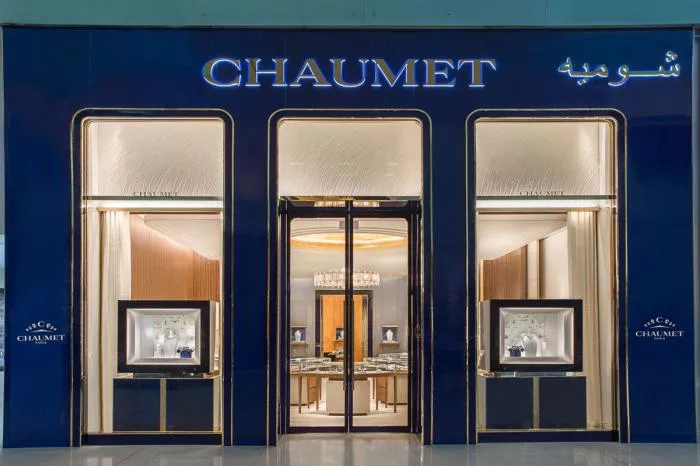For over two centuries, the esteemed haute jewelry maison Chaumet has seamlessly blended artistry with the natural world. From its inception in 1780, the brand has drawn inspiration from nature’s delicate details, capturing the essence of everything from the flutter of a butterfly’s wings to the iridescence of pearls. This dedication to nature is vividly showcased in the new exhibition, “Chaumet & Nature: Nature-Inspired Jewellery Since 1780,” which opens on November 1 at M7 in Msheireb Downtown Doha. This collaboration with Qatar Museums and Qatar Creates highlights Chaumet’s commitment to craftsmanship while honoring the historical treasures of the Qatar Museum.
An Exhibition of Collaboration and Creativity
This exhibition is part of a broader partnership between Chaumet and Qatar Museums, which began in 2023. The collaboration is characterized by a unique fusion of tradition and innovation, illustrated by the Arabic logo created by artist Zainab Al Shibani for the maison. The exhibition serves as a testament to Chaumet’s ongoing engagement with the rich cultural tapestry of the region, reinforcing the links between local heritage and global artistic expression.
Maha Ghanim Al Sulaiti, director of M7, emphasizes the importance of this collaboration. “The remarkable beauty of Chaumet’s collection presents the relationship between craftspeople and nature over nearly a quarter of a millennium,” she notes. “Such craftsmanship resonates across many cultures and generations, proving that timeless beauty speaks to us all.”
A Sensory Journey Through Nature’s Splendor
Visitors to the exhibition can expect a sensory journey through 240 years of naturalistic design. The display features over 100 pieces of jewelry from Chaumet’s extensive archives, spanning from 1810 to 2023. Violaine Bigot, head of heritage at Chaumet, explains, “This exhibition reveals a fascinating interplay of materials, techniques, and evolving interpretations of nature.”
Throughout the years, Chaumet’s designs have evolved significantly. In the 19th century, the use of gold and silver was prominent, often highlighting the beauty of precious stones. This era reflected a romantic and naturalistic view of flora and fauna. The dawn of the 20th century brought platinum into the spotlight, while the art deco and retro periods embraced diamonds and harder stones, leading to more geometric and stylized interpretations of natural themes. The 1970s introduced a more abstract and expressive approach, characterized by the use of yellow and white gold, along with textured finishes.
Historical Connections to Nature
Chaumet’s connection to nature can be traced back to its founder, Marie-Étienne Nitot, who considered himself a “naturalist jeweler.” This legacy was further enhanced during the reign of Napoléon and Empress Joséphine, a noted botanist and one of Chaumet’s most iconic patrons. Empress Joséphine commissioned numerous pieces adorned with exquisitely crafted flowers, leaves, and insects, solidifying Chaumet’s reputation for producing stunning nature-inspired designs.
Moreover, the maison’s exploration of nature extends to the ocean’s treasures, particularly pearls. Joseph Chaumet took a keen interest in these precious gems, establishing a laboratory in 1890 to authenticate pearls and earning a reputation as a leading trader by the early 20th century. The historical significance of pearl diving in Qatar complements Chaumet’s legacy, reflecting the deep-rooted connections between the two.
Honoring Qatar’s Cultural Heritage
In recognition of Qatar’s rich history of pearl trading, the exhibition celebrates the deep ties between Chaumet and Qatar’s natural resources. Rubina Amjad from Chaumet explains, “We wanted to adapt our themes to Qatar by honoring the country’s natural resources and the shared savoir-faire in natural pearls.”
As part of this celebration, Qatari artist Shouq Al Mana has created an exclusive piece for the exhibition, drawing on the country’s pearl trading history and traditions. Additionally, Qatari poet Salman Bin Khalid has penned a poem for the exhibition, weaving together themes of nature, Arabic poetry, and Chaumet’s artistic narrative. This literary collaboration further enriches the exhibition, merging diverse forms of artistic expression.
Captivating Designs and Inspirations
Chaumet’s designs also draw from the animal kingdom, incorporating motifs such as bees, birds, snakes, and butterflies. Notably, the bee symbolizes Napoléon and holds special significance in Chaumet’s designs. Bigot highlights that wings have been a major source of inspiration for the maison, explaining, “The creative process starts with detailed sketches, where every line adds depth and precision, capturing the designer’s emotions.”
One striking example of this process is the transformable tiara/brooch crafted for Gertrude Vanderbilt Whitney, wife of American industrialist Harry Payne Whitney. Each iteration of the design captures layers of detail, culminating in intricate creations made from platinum, gold, enamel, and diamonds.
A Celebration of Craftsmanship
With the exhibition fast approaching, Maha Ghanim Al Sulaiti expresses enthusiasm for showcasing Chaumet’s exquisite works to the M7 audience. “We are particularly excited to feature a collection of Chaumet works highlighting pearls, a symbol central to the identity of Qatar since the nation’s earliest days,” she remarks.
“Chaumet & Nature: Nature-Inspired Jewellery Since 1780” promises to be an unforgettable experience for art and jewelry enthusiasts alike. It serves not only as a showcase of luxurious craftsmanship but also as a dialogue between culture, nature, and the enduring beauty of artistic expression.
Conclusion: Bridging Art and Nature
As the exhibition opens on November 1 and runs until December 14, visitors are invited to immerse themselves in a world where jewelry transcends mere adornment, becoming a vibrant narrative of nature’s beauty and cultural significance. Chaumet’s dedication to highlighting the interplay between craftsmanship and the natural world ensures that this exhibition will leave a lasting impression, bridging the gap between centuries of tradition and contemporary artistry.
Related topics:

